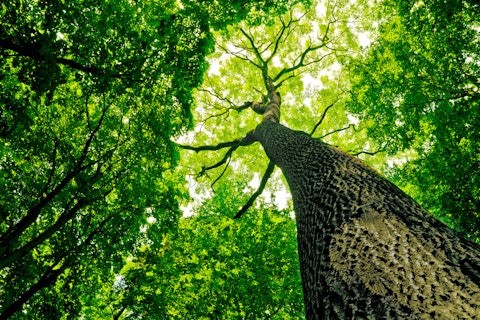In this piece, we will take a look at the 25 most biodiverse countries in the world. To skip our analysis of global biodiversity, its ecological and economic impacts, as well as some companies that operate within this space, go ahead and see the 5 Most Biodiverse Countries in the World.
Biodiversity, or biological diversity, refers to the variety of life on Earth, including the diversity of species, genes, and ecosystems. It encompasses all living organisms, from the smallest microorganisms to the largest mammals, and the interactions they have with each other and their environments. The term biodiversity is often considered a measure of the health and resilience of ecosystems, and its loss can have far-reaching ecological, economic, and societal consequences. Although sustainability commitments are increasingly prevalent in corporate strategic planning, there remains a significant gap in attention to the critical investment required for the preservation and augmentation of global biodiversity.
As per the World Economic Forum (WEF), over 50% of the global Gross Domestic Product (GDP) relies significantly or to a moderate extent on ecosystem services. These services encompass natural resources, groundwater, and the essential role of pollination in food production. However, biodiversity investment goes beyond sustainability; it also presents a compelling business proposition. In the coming decade, the WEF projects that safeguarding natural ecosystems and enhancing biodiversity could unlock business prospects valued at a staggering $10 trillion yearly while concurrently spawning approximately 400 million fresh employment opportunities. These opportunities span various sectors, including enhancing energy efficiency in construction and implementing circular economy solutions within the automotive, electronics, and textile industries.
See also: 25 Most Environmentally Friendly Companies in the World
Thus, declining ecosystems hold massive financial repercussions for companies. Similar to the asset-price bubble of 2008, this phenomenon eludes straightforward linear understanding. However, once set in motion, its consequences can far surpass the ordinary. Such a scenario holds substantial significance for businesses, affecting them in both the immediate and long-term contexts. As an illustration, the Intergovernmental Science-Policy Platform on Biodiversity and Ecosystem Services (IPBES), a body associated with the United Nations, has calculated that the economic worth of food production directly reliant on pollinating insects ranges from $235 billion to $577 billion on a global scale. Additionally, the UNDP states that degrading ecosystem could trigger a downward spiral of approximately $2.7 trillion in global GDP by 2030.
Businesses perceived as environmentally conscious often cultivate an image of responsibility, yielding advantages in both public perception and practicality that extend beyond their immediate operations. Nevertheless, prioritizing cost savings through reduced energy consumption takes precedence. In addition to curbing energy use, these forward-thinking organizations allocate resources to R&D, and actively champion social initiatives aimed at fostering eco-friendly products and internal procedures. For instance, Ford Motor Company (NYSE:F) has adhered to a comprehensive ten-point environmental policy over an extended period. The corporation incorporates sustainable fabrics into its vehicles, with an impressive 80% recyclability rate for both the Focus and Escape models. Furthermore, Ford boasts ownership of one of the world’s largest green roof. Aside from Ford Motor Company (NYSE:F), companies like Hewlett Packard Enterprise Company (NYSE:HPE), Starbucks Corporation (NASDAQ:SBUX), and Johnson & Johnson (NYSE:JNJ) have several initiatives that are aimed at marking a positive impact on global biodiversity, either by reducing emissions and cutting back on toxic substances used in manufacturing products.

vovan/Shutterstock.com
Our Methodology
To compile our list of the 25 most biodiverse countries in the world, we made use of the Global Biodiversity Index presented by social research firm ‘The Swiftest’ which ranks 201 countries based on six ranking factors including the number of bird, amphibian, fish, mammal, reptile, and plant species present in each nation.
Most Biodiverse Countries in the World
25. Panama
Global Biodiversity Index: 170.54
Panama boasts one of the world’s greatest levels of natural diversity. Its tropical climate, characterized by elevated temperatures and humidity, provides a nurturing environment for a plethora of plant and animal species. In total, Panama is home to more than 10,462 distinct plant species, encompassing a rich assortment of 1,200 orchid varieties, 678 fern species, and 1,500 tree varieties. Additionally, the country boasts 252 mammal species, 972 native bird species, and 228 diverse amphibian species.
24. Cameroon
Global Biodiversity Index: 172.41
Cameroon is home to approximately 9,000 recognized plant species, and new ones are continuously being discovered by scientists each year. Among these, just over 500 species are exclusive to Cameroon, meaning they exist nowhere else on Earth. This remarkable biodiversity is a result of the diverse range of ecosystems found within the country, encompassing a coastline, savannas, deserts, mountains, and tropical rainforests. Cameroon is often aptly described as a ‘miniature Africa’ due to this remarkable variety of environments it harbors.
23. Kenya
Global Biodiversity Index: 179.42
Kenya boasts an extensive range of ecological zones and habitats, encompassing lowland and mountain forests, both wooded and open grasslands, semi-arid scrubland, dry woodlands, inland aquatic environments, and coastal and marine ecosystems. Wetlands play a crucial role in Kenya’s economy, contributing significantly to agriculture, livestock production, energy generation (via hydroelectric projects), fisheries, and tourism. Despite robust efforts to safeguard Kenya’s biodiversity, there are numerous unprotected regions facing rapid degradation due to various threats, resulting in a multitude of conservation challenges.
22. Philippines
Global Biodiversity Index: 186.92
The Philippines is renowned as a mega-diversity country with regards to its remarkable biodiversity. This archipelago of over 7,000 islands in Southeast Asia boasts an astonishing array of species and ecosystems. Numerous islands within the archipelago are thought to exhibit exceptionally high levels of endemism, encompassing a minimum of 25 plant genera and accounting for 50% of the terrestrial wildlife. The nation is a habitat to more than 52,000 documented species, with over half of them existing exclusively within its borders. When considering the area-to-diversity ratio, it’s likely that the Philippines contains a greater variety of life forms than any other country on Earth.
21. Argentina
Global Biodiversity Index: 198.74
Given its diverse range of habitats, Argentina naturally boasts abundant biodiversity. The country is home to slightly over 1,000 bird species, a wealth of flora, and numerous hundreds of mammal, reptile, and amphibian species, among them the likes of Jaguars, Orcas, and critically endangered frogs.
20. Thailand
Global Biodiversity Index: 200.77
Situated in the tropical expanse of Southeast Asia, Thailand spans 513,120 square kilometers and is home to a population of approximately 69 million. As an upper-middle-income economy, Thailand is blessed with a diverse ecosystem and abundant biodiversity, which hold significant importance for both local communities and the nation’s overall development. Ranking among the most biodiverse countries in Southeast Asia, Thailand reaps substantial benefits from the ecosystems, terrains, and habitats that nurture its exceptional array of biodiversity.
19. South Africa
Global Biodiversity Index: 207.94
South Africa’s wealth of topographical features, climatic variations, geological formations, and diverse population offers a broad spectrum of natural and cultural assets. Hence, it comes as no surprise that it is internationally recognized as one of the most biodiverse countries in the world, thanks to its extensive range of species, high rate of endemism, and a plethora of diverse ecosystems.
18. Bolivia
Global Biodiversity Index: 209.55
Positioned within the heart of the Tropical Andes Biodiversity Hotspot, Bolivia stands out as one of the most biodiverse countries in the world. It boasts an impressive roster of roughly 13,644 plant species, 799 fungal species, 13,719 insect species, 313 reptile species, 251 amphibian species, and 908 species of freshwater fish.
17. Tanzania
Global Biodiversity Index: 213.10
Tanzania, located in East Africa, is renowned for its expansive wilderness regions. These encompass the Serengeti National Park, a renowned safari destination inhabited by the iconic “big five” (elephant, lion, leopard, buffalo, rhino), as well as Kilimanjaro National Park, which is home to Africa’s tallest mountain. Along its coastline, you’ll find tropical islands like Zanzibar, infused with Arabic influences, and Mafia, boasting a marine park that shelters whale sharks and vibrant coral reefs.
16. Democratic Republic of Congo
Global Biodiversity Index: 214.43
The Democratic Republic of Congo (DRC) holds a paramount position in Africa’s biodiversity conservation efforts. Within its borders, the DRC shelters an array of extraordinary endemic species, including the okapi, Grauer’s gorilla, bonobo, and Congo peacock. It possesses over half of Africa’s tropical forests, with dense woodlands and forests spanning more than half of its vast land area of 2.3 million square kilometers. These ecosystems play a vital role in regulating global climatic patterns.
15. Malaysia
Global Biodiversity Index: 214.71
Malaysia, known for its remarkable biodiversity, ranks among the world’s megadiverse nations. In this regard, the country has consistently demonstrated its dedication to the sustainable preservation and management of its rich biodiversity. During the 1992 United Nations Conference on Environment and Development in Rio de Janeiro, Malaysia pledged its commitment to ensure that at least 50% of its land would remain under forest tree cover. As of today, Malaysia’s forest cover has exceeded this commitment, reaching 54.6%, which corresponds to 18.04 million hectares of its total land area.
14. Vietnam
Global Biodiversity Index: 216.97
Vietnam, located in the eastern part of the Indochina Peninsula, spans over 15 latitudes, covering a distance of 1,650 kilometers. Its extensive marine territory comprises a coastline stretching 3,260 kilometers and is dotted with numerous islands. The country boasts abundant freshwater ecosystems, encompassing over 10 million hectares of wetlands. Vietnam exhibits remarkable biodiversity across its landscapes, featuring a diverse array of fauna, flora, and microorganisms. On the terrestrial front, it has identified more than 13,200 flora species and approximately 10,000 fauna species, along with over 3,000 aquatic species thriving in its inland wetlands. The tropical marine region encompasses over 20 distinctive ecosystems and is home to a staggering 11,000 marine species. Moreover, with 16 crop groups and an impressive array of more than 800 distinct species, Vietnam is globally recognized as a prominent hub for plant breeding.
13. Myanmar
Global Biodiversity Index: 221.77
Myanmar boasts remarkable biodiversity, thanks to its diverse range of ecosystems spanning from sea level to towering mountain peaks. Among these ecosystems, forests are pivotal for environmental stability. However, the country also hosts a wide array of freshwater environments, ranging from swift mountain streams to expansive, slow-moving lowland rivers, along with lakes and non-flowing wetlands. Additionally, Myanmar possesses some of the most extensive and least disturbed coastal and marine ecosystems in mainland Southeast Asia.
The extensive coastline encompasses around half a million hectares of brackish and freshwater swamplands, providing crucial ecological functions and serving as habitats for spawning, nursery, and feeding grounds for economically significant aquatic organisms such as fish, prawns, and other aquatic flora and fauna. In total, Myanmar boasts an impressive biodiversity, including 11,800 vascular plant species (including gymnosperms and angiosperms), 251 mammal species, 1,056 bird species, 279 reptile species, 82 amphibian species, 841 medicinal plants, 96 varieties of bamboo, and numerous tropical crop species.
12. Papua New Guinea
Global Biodiversity Index: 226.57
Papua New Guinea, known for its significant share of the world’s biodiversity, boasts a diverse landscape featuring breathtaking highland valleys, expansive grasslands, extensive tropical rainforests, ancient swamplands, and intricate mangrove ecosystems. Within this remarkable setting, the country is a sanctuary for a rich variety of wildlife, including an estimated 150,000 species of insects, 314 species of freshwater fish, over 641 species of amphibians and reptiles, 740 bird species, and 276 mammal species. Among these, notable inhabitants include the Queen Alexandra Birdwing, the world’s largest butterfly, the largest species of tree frog, the planet’s sole poisonous birds, and 12 of the 14 recognized tree kangaroo species.
11. Venezuela
Global Biodiversity Index: 273.39
Venezuela’s remarkable geographic and biological diversity encompasses the Andes Mountains, Amazon Basin, Guiana Shield, Caribbean Sea, and Atlantic Ocean, securing its position among the most biodiverse countries in the world. This rich tapestry of ecosystems provides habitat to numerous endemic species. The nation’s wildlife is equally varied, featuring over 250 mammal species, including elusive cats like pumas and jaguars, as well as howler monkeys, sloths, and the capybara, which holds the title of the world’s largest rodent, among other notable species.
10. United States
Global Biodiversity Index: 280.13
The United States stands as a worldwide hub of diversity for numerous organism groups, particularly those dependent on aquatic environments, such as salamanders, freshwater mussels, and freshwater turtles. However, the country, like many others across the globe, is undergoing a biodiversity crisis. While initiatives like the America the Beautiful initiative sets a nationwide goal to conserve 30% of U.S. lands and waters by 2030, in line with the global 30 by 30 goal, a recent U.S. wildlife conservation report highlights that 40% of animal species, 34% of plant species, and 40% of ecosystems across the country are currently facing significant risks.
9. Ecuador
Global Biodiversity Index: 291.58
Ecuador stands out on the global stage for its abundant floral diversity, a hidden gem often threatened by human activities. This nation boasts an impressive statistic – it is estimated to harbor more plant species per unit area than any other South American country. Ecuador’s natural landscape can be broadly classified into four distinct geographical zones: the coastal region, the mountainous terrain, the lush Amazon rainforest, and the renowned Galapagos Islands. When it comes to conservation efforts, Ecuador is typically categorized into continental Ecuador and the Galapagos Islands, although the distribution of such initiatives is not the same across the nation. Within its borders, Ecuador hosts an array of 26 distinct habitat types, each characterized by unique flora patterns dictated by factors like altitude and precipitation levels.
8. India
Global Biodiversity Index: 301.63
From a biogeographical perspective, India occupies a strategic position at the confluence of three distinct realms: the Afro-tropical, Indo-Malayan, and Paleo-Arctic realms. Consequently, India boasts characteristic elements from each of these realms. This fusion of three distinct biogeographical realms endows the country with a wealth of biological diversity, rendering it exceptionally rich and unique. According to the International Union for Conservation of Nature (IUCN), India is a megadiverse country that claims 2.4% of the world’s land area, yet accounts for 7-8% of all recorded species of flora and fauna.
7. Peru
Global Biodiversity Index: 330.12
Peru, situated in the western region of South America, spans over 1.2 million square kilometers and is divided into three distinct regions: the Coast, Highlands, and Jungle. Its current population surpasses 31.5 million residents. According to the Global Biodiversity Index, Peru ranks among the top ten most biodiverse countries in the world and is home to the second-largest expanse of the Amazon rainforest on the planet. This combination accounts for a staggering 70% of the world’s total biodiversity.
6. Australia
Global Biodiversity Index: 337.18
Australia boasts a diverse range of ecosystems owing to its unique geographical positioning, providing a haven for numerous species found nowhere else on the planet. However, the menace of deforestation poses a grave threat to many of these plants and animals. Among the endemic wildlife found here, one can encounter the common ringtail possum, kangaroo, Parma wallaby, Tasmanian devil, galah, gang-gang cockatoo, and the Common wombat.
Click to continue reading and see the 5 Most Biodiverse Countries in the World.
Suggested Articles:
- 20 Most Dog Friendly Cities in the US
- 12 Best Places to Retire in Ecuador
- 20 Most Popular Liquor Brands in America
Disclosure: None. 25 Most Biodiverse Countries in the World is originally published on Insider Monkey.





